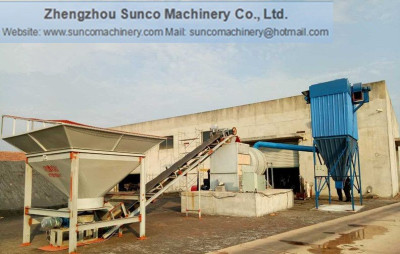Menu
Rotary Dryer, Drying Machine, Raymond Mill, Stone Crusher
Home > Industry News >

For silica sand products, especially high purity silica sand, water needs to be 100% removed nearly, generally through the silica sand drying process, the moisture content can be reduced to about 0.5%, to meet the production specification.
Sunco Machinery designed the best silica sand drying solution according to the customer's actual requirements. In sand drying practice, stainless steel drying equipment is often used to avoid iron pollution, but meantime stainlesssteel dryer machine is rather expensive. At the same time, strengthen the monitoring and testing of the drying system, to improve heat exchanging efficiency and minimize drying line operating costs.
The balance of the whole silica sand drying system guarantees the drying effect. The reasonable structure of the dryer is adopted to make the material fully in contact with the high temperature hot air. Through the system design, the reasonable flow of quartz sand and hot air flow is guaranteed to achieve the best drying performance.
Features of Silica Sand Drying System:
1. High production capacity and large-scale production can be realized;
2. Flexible replacement of heat source, free choice of heat source according to local fuel condition, such as coal, waste wood, biomass pellet, diesel, natural gas, etc;
3. Set up a effective dust removal system to meet the environmental protection standards by pulse bag filter;
4. High automation of the drying line, saving manpower as much as possible.
The technical process of Silica Sand Drying:

The water-bearing silica sand is fed into the rotary silica sand dryer by input belt conveyor, at the same time, the high temperature hot air provided by the burner and furnace enters the silica sand dryer. The sand can be fully heated and dried in the dryer drum. The hot air and water vapor are drawn out of the dryer by the induced draft fan in time, dust and water vapor are purified by pulse bag filter. The dried silica sand is discharged from the outlet chute through the spiral of the quartz sand dryer, and enters the vibrating sieve by output belt conveyor, finally to be classfied into different size ranges, and to be packed into bags.
